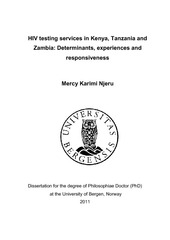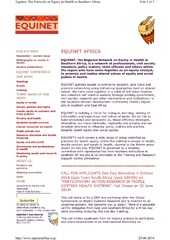| dc.contributor.author | Byskov, Jens | en_US |
| dc.contributor.author | Marchal, Bruno | en_US |
| dc.contributor.author | Maluka, Stephen | en_US |
| dc.contributor.author | Zulu, Joseph | en_US |
| dc.contributor.author | Bukachi, Salome A. | en_US |
| dc.contributor.author | Hurtig, Anna-Karin | en_US |
| dc.contributor.author | Blystad, Astrid | en_US |
| dc.contributor.author | Kamuzora, Peter | en_US |
| dc.contributor.author | Michelo, Charles | en_US |
| dc.contributor.author | Nyandieka, Lillian N. | en_US |
| dc.contributor.author | Ndawi, Benedict | en_US |
| dc.contributor.author | Bloch, Paul | en_US |
| dc.contributor.author | Olsen, Øystein Evjen | en_US |
| dc.contributor.author | the REACT Consortium | en_US |
| dc.date.accessioned | 2014-09-16T14:23:02Z | |
| dc.date.available | 2014-09-16T14:23:02Z | |
| dc.date.issued | 2014-08-20 | eng |
| dc.identifier.issn | 1478-4505 | |
| dc.identifier.uri | https://hdl.handle.net/1956/8498 | |
| dc.description.abstract | Background: Priority-setting decisions are based on an important, but not sufficient set of values and thus lead to disagreement on priorities. Accountability for Reasonableness (AFR) is an ethics-based approach to a legitimate and fair priority-setting process that builds upon four conditions: relevance, publicity, appeals, and enforcement, which facilitate agreement on priority-setting decisions and gain support for their implementation. This paper focuses on the assessment of AFR within the project REsponse to ACcountable priority setting for Trust in health systems (REACT). Methods: This intervention study applied an action research methodology to assess implementation of AFR in one district in Kenya, Tanzania, and Zambia, respectively. The assessments focused on selected disease, program, and managerial areas. An implementing action research team of core health team members and supporting researchers was formed to implement, and continually assess and improve the application of the four conditions. Researchers evaluated the intervention using qualitative and quantitative data collection and analysis methods. Results: The values underlying the AFR approach were in all three districts well-aligned with general values expressed by both service providers and community representatives. There was some variation in the interpretations and actual use of the AFR in the decision-making processes in the three districts, and its effect ranged from an increase in awareness of the importance of fairness to a broadened engagement of health team members and other stakeholders in priority setting and other decision-making processes. Conclusions: District stakeholders were able to take greater charge of closing the gap between nationally set planning and the local realities and demands of the served communities within the limited resources at hand. This study thus indicates that the operationalization of the four broadly defined and linked conditions is both possible and seems to be responding to an actual demand. This provides arguments for the continued application and further assessment of the potential of AFR in supporting priority-setting and other decision-making processes in health systems to achieve better agreed and more sustainable health improvements linked to a mutual democratic learning with potential wider implications. | en_US |
| dc.language.iso | eng | eng |
| dc.publisher | BioMed Central | eng |
| dc.rights | Attribution CC BY | eng |
| dc.rights.uri | http://creativecommons.org/licenses/by/2.0 | eng |
| dc.subject | Accountability for reasonableness | eng |
| dc.subject | Priority setting | eng |
| dc.subject | Fairness | eng |
| dc.subject | Decentralization | eng |
| dc.subject | Decision making | eng |
| dc.subject | Democratization | eng |
| dc.subject | Health systems | eng |
| dc.subject | Kenya | eng |
| dc.subject | Tanzania | eng |
| dc.subject | Zambia | eng |
| dc.title | The accountability for reasonableness approach to guide priority setting in health systems within limited resources - findings from action research at district level in Kenya, Tanzania, and Zambia | en_US |
| dc.type | Peer reviewed | |
| dc.type | Journal article | |
| dc.date.updated | 2014-09-11T19:07:34Z | |
| dc.description.version | publishedVersion | en_US |
| dc.rights.holder | Copyright 2014 Byskov et al.; licensee BioMed Central Ltd. | |
| dc.rights.holder | Jens Byskov et al.; licensee BioMed Central Ltd. | |
| dc.source.articlenumber | 49 | |
| dc.identifier.doi | https://doi.org/10.1186/1478-4505-12-49 | |
| dc.identifier.cristin | 1175805 | |
| dc.source.journal | Health Research Policy and Systems | |
| dc.source.40 | 12 | |





